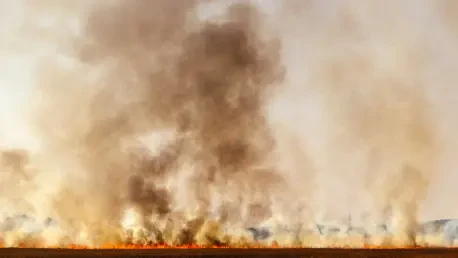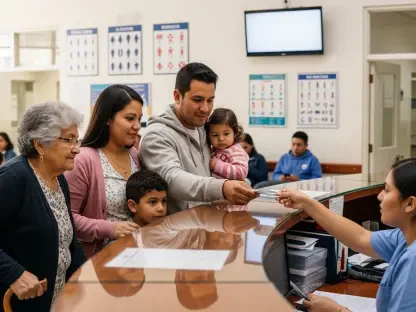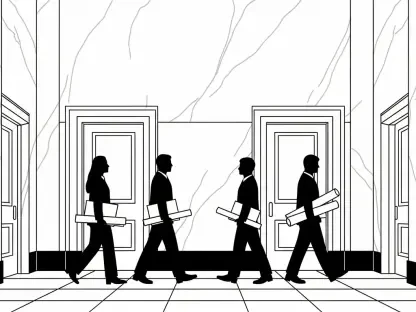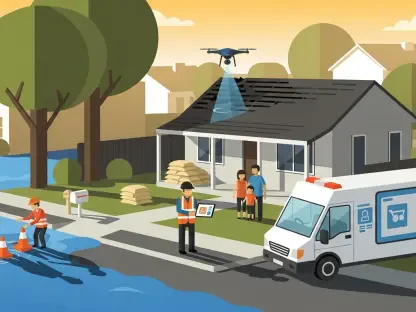Recent fires in Los Angeles County have left many homes standing amid the devastation; however, the impact of smoke damage has rendered several properties uninhabitable, adding a layer of complexity for those navigating post-disaster recovery. Rossana Valverde’s situation captures the challenges faced by survivors as lingering toxicity from smoke, including high levels of arsenic, lead, and nickel, has led to substantial financial strain. Although her home survived the literal flames, the smoke damage necessitates extensive cleaning at a cost exceeding $300,000. Despite filing a claim with her insurer, State Farm, her property has not been fully restored, with only $40,000 received to date, illustrating the systemic delays affecting her recovery efforts. This narrative sets the foundation for understanding the broader challenges faced by survivors dealing with smoke damage claims and highlights the ongoing debate regarding insurance responsibilities and consumer rights amid such widespread disaster situations.
Fires Strike and Survivors Suffer
The fires in Los Angeles County not only decimated landscapes but also introduced insidious challenges for survivors dealing with the aftermath of smoke damage. As physical remnants of the fires dissipated, lingering smoke presented severe health risks, complicating efforts to return to normalcy. Valverde’s predicament underscores the immediate, unseen dangers faced by residents, where smoke residue has contaminated her home’s air quality, making reconstruction and rehabilitation even more costly. The residual toxins in her residence necessitate thorough cleaning, adding financial burdens that exacerbate the emotional toll of surviving such a disaster. The situation extrapolated from Valverde’s experience serves as a poignant illustration of the uphill battle many survivors must endure, especially when faced with delayed insurance responses. The financial and health complexities embedded in smoke damage challenge traditional perceptions of post-fire recovery, prompting a reassessment of how insurance companies address these nuanced claims.
Smoke Damage and Claims Processing
Rossana Valverde’s struggle with State Farm effectively illustrates difficulties commonly faced by fire survivors: navigating insurance claim processes hindered by delays and bureaucratic setbacks. This particular case reveals systemic challenges in addressing the nuances of smoke damage claims, contrasted against more visibly apparent fire damage. While initial insurance responses might be swift when fire damage is clear-cut, smoke damage requires intricate inspections and validations, often prolonging claims processing as insurers grapple with documenting extensive inventories and assessing toxic residues. Valverde’s frustration with State Farm’s sluggish responses, compounded by the apparent negligence in communication, is emblematic of broader inefficiencies within insurance frameworks designed to support recovery. Experiencing slow adjuster communications or misplaced documentation exemplifies issues that policyholders encounter with insurance where clarity and transparency are imperative for timely resolution. Such delays prompt critical discussions on the preparedness and operational standards of insurance providers in efficiently supporting affected populations in crisis scenarios.
Coalition Urges Investigation
Beyond individual discontent, collective efforts by fire survivors alongside state lawmakers aim to catalyze comprehensive oversight into State Farm’s handling of smoke damage claims, pushing for systematic investigations into potential negligence. This coalition seeks to illuminate the procedural inefficiencies and suspected denial strategies that appear to hinder rightful claim settlements. As the issue gains momentum, Insurance Commissioner Ricardo Lara has been drawn into deliberations about State Farm’s performance, urged by survivors to implement oversight mechanisms ensuring accountability. The appeals for intervention are not merely symbolic but represent tangible calls for policy adjustments ensuring insurance practices align with consumer protection standards. These efforts highlight the power of collective advocacy in instigating institutional reform, as stakeholders work together, questioning discrepancies and urging proactive solutions mandated by regulatory bodies to safeguard consumer rights. Their unified stance represents more than mere dissatisfaction; it is a testament to collective resilience, propelling the demand for institutional accountability and ethical practices in disaster management.
State Farm’s Rate Increase Request
Amidst ongoing disputes over claim processing, State Farm’s request for a substantial 17% rate increase brings another dimension into the discussion, increasing scrutiny on corporate conduct and consumer fairness. The demand for an interim rate hike amid alleged delays in processing claims has sparked controversy, accentuating tensions between insurer profit motives and public welfare. As rate increase decisions rest with regulatory authorities, survivors and consumer advocates voice concerns over the implications of such corporate strategies in the context of continued disaster impact on communities. Under the spotlight of public and regulatory examination, this request serves as a catalyst for broader conversation, examining the balance of industry sustainability against consumer rights, community resilience, and ethical responsibility. The contrast between proposed rate hikes and operational inefficiencies during crisis recovery underscores the necessity for more stringent oversight and transparency in corporate practices, ensuring decisions align with overarching commitments to community welfare and ethical integrity.
Commissioner Lara’s Response
In response to mounting pressures, Commissioner Ricardo Lara has actively engaged with State Farm’s executives, addressing systemic discrepancies noted in claims processing amid increasing consumer dissatisfaction. Through correspondence and formal inquiries, Lara emphasizes the insurer’s obligation to streamline communication processes and ensure smoke damage claims are assessed with due diligence, minimizing undue delays. The complexities surrounding smoke damage necessitate a reevaluation of insurance practices, as Lara urges reforms within standard operating procedures to facilitate equitable settlements. His actions underscore the significance of regulatory oversight and the imperative for transparent, consistent consumer-oriented practices required for effective, fair recovery frameworks. Lara’s engagement reflects broader initiatives by regulatory authorities committed to safeguarding consumer interests while fostering industry accountability, a dual objective illuminating pathways for institutional reform amidst heightened scrutiny.
Complexities of Smoke Damage
For many survivors, the intricacy of smoke damage emerges as an unforeseen obstacle, a problem compounded by insurance practices inadequately equipped to address these nuanced claims effectively. Expert Amy Bach from United Policyholders sheds light on these complexities, explaining that smoke damage requires distinct evaluation methodologies compared to fire damage. Given the challenges in identifying and quantifying smoke-related losses, Bach advocates for professional assessments to substantiate claims, ensuring rightful compensation. Her insights draw attention to broader inadequacies in insurer documentation standards when processing smoke damage claims, where policyholders must navigate extensive verification processes, often lacking immediate visibility or consensus on damage assessments. The professional guidance from Bach and similar experts provides survivors critical pathways to strengthen their claims, facilitating fair procedural outcomes amid otherwise convoluted insurance dialogues. The dialogue around smoke damage emphasizes critical discourse about necessary industry adaptations, highlighting the demand for insurers to innovate and respond effectively to evolving disaster scenarios.
Individual Struggles Persist
Beyond generalized claims processing issues, individual narratives like those from Andrew Wessels and Gail Jamentz offer a window into personal battles dealing with prolonged claim delays and bureaucratic complexities. Wessels’ constant rotation through temporary housing arrangements amid unresolved claims mirrors Valverde’s plight, providing real-life dimensions to the logistical nightmares facing survivors in practical terms. Jamentz’s persistent efforts to designate her property a total loss encapsulates the frustrating tensions survivors face when grappling with rigid insurance standards. These personal accounts serve as poignant illustrations of the human cost embedded in operational inefficiencies, underscoring significant gaps in procedural justice and accessibility within existing insurance frameworks. The stories of Wessels, Jamentz, and Valverde resonate deeply, amplifying urgent calls for reform and reminding stakeholders of the holistic perspectives needed to address the interwoven complexities of disaster recovery and insurance policy implementations.
Legal and Regulatory Scrutiny
As individual and collective grievances proliferate, legal and regulatory scrutiny regarding State Farm’s practices intensifies, fueled by persistent dissatisfaction among policyholders facing enduring bureaucratic challenges. The judicial landscape reveals critical tensions, where ongoing litigations and recent rulings introduce pivotal dialogues on insurance practices, challenging conventional norms in disaster claim adjudications. State Farm and other insurers confront mounting pressure to rationalize operations amid critiques on handling smoke damage claims, exacerbated by legal precedents underscoring varied interpretations of physical loss and damage frameworks. These judicial and regulatory developments raise fundamental questions about consumer rights and protections within insurance ecosystems, prompting reevaluation of procedural standards and operational integrity. As regulatory bodies navigate these volatile dynamics, integral considerations emerge surrounding equitable claim processing, catalyzing policy discussions aimed at enhancing public protection and institutional accountability, aligning industry standards with evolving disaster realities.
Commissioner Lara’s Long-term Strategies
In response to the intricate challenges posed by smoke damage claims processing, Commissioner Ricardo Lara collaborates with health authorities and state legislators to develop comprehensive statewide standards addressing smoke damage remediation. These initiatives aim to streamline recovery protocols, establishing uniform measures that guide insurance dealings and ensure equitable frameworks for survivor support. Lara’s strategic efforts reflect broader ambitions to standardize insurance operations, fostering consistent application of recovery policies and promoting fairness amid ongoing disaster impacts. Through collaborative dialogues encompassing health perspectives and legislative insights, Lara emphasizes the critical nexus of regulatory innovation required for efficacious policy frameworks addressing smoke damage. This strategic vision projects long-term objectives for insurance reform, illuminating pathways to enhance procedural justice and operational clarity, aligning stakeholder expectations with consumer protection mandates in increasingly complex disaster contexts.
A Call for Reform
Ultimately, the situation unfolding around State Farm amidst the Los Angeles fires underscores the imperative for decisive legislative and procedural reform aimed at rectifying inefficiencies within insurance ecosystems. The discourse surrounding smoke damage claims has spotlighted deficiencies that challenge survivors’ rights to just and expedient support, advocating for comprehensive revisions that restore trust and transparency in the insurance sector. As affected families grapple with prolonged recovery amid procedural ambiguities, reform initiatives would address pressing concerns surrounding equitable claim processing, enabling survivors to navigate post-disaster scenarios with assuredness and security. These reformative dialogues emphasize the quintessential need to align industry practices with consumer-centric values, fostering an environment of restored trust where policyholders confidently engage with insurers. The broader implications of these reform calls transcend immediate crisis scenarios, laying foundational pathways for future resilience in disaster recovery, underscoring critical commitments to ethical stewardship and consumer equity.









